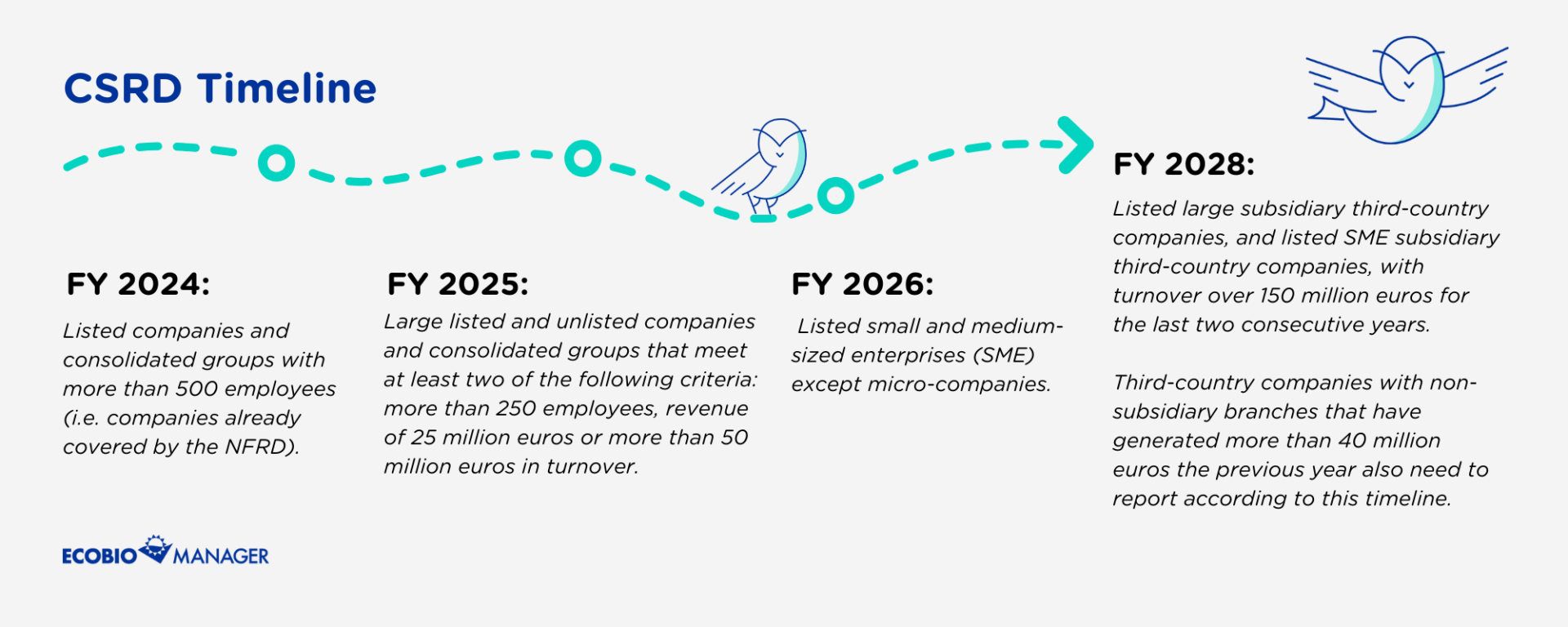
ESEF explained – The Electronic Format for Tagging the CSRD Report
ESEF, the European Single Electronic Format is a crucial part of the sustainability reporting process. The sustainability report, also known as the CSRD report, will be presented as part of the company’s annual mandatory reporting and accompany the financial reporting that companies usually do. The CSRD report must be submitted using the European Single Electronic Format (ESEF). This process is called tagging.
CSRD aims to simplify the availability of sustainability data and make it accessible to stakeholders in an easy-to-read format. The report will be submitted to a national contact point, which will forward it to ESAP (European Single Access Point). ESAP will allow investors and stakeholders to access the information easily. The objective is to redirect the economy towards a more environmentally friendly direction and prevent greenwashing.
ESEF and tagging sustainability information
Established initially to guide companies in creating their financial statements, ESEF tagging will also apply to CSRD reporting. The format specifies an electronic workflow for tagging the data that must be reported. Compliance with ESEF is mandatory and ensures that the report is machine- and human-readable.
What is the XHTML format?
The sustainability report must be prepared as an XHTML document. XHTML, or Xtensible HyperText Markup Language, is a precise way to write website code. The format allows for marking the statement with XBRL tags.
What are the XBRL tags?
The XBRL tags are used to flag specific values as particular information. For example, the number 10,000 could be tagged in the sustainability statement as the number of company employees. This tagging allows for easy comparison between companies. In practice, the tagging is done using iXBRL technology (InlineXBRL).
When should I comply with the ESEF?
The establishment of ESAP is set for 2027 with submission of sustainability data from January 2028, but companies should start preparing for the digital process right away. Large companies are required to publish their CSRD report with data from FY 2024. The timeline is moving fast, so it’s important to take action now!

The best approach to producing an ESEF-compliant report
Excel is a powerful tool, but it is not very reader-friendly. Also, Excel files are incompatible with the ESEF format because the report must be tagged with the iXBRL tags.
There are two approaches to handling this task:
The best approach is to create the sustainability report directly on a platform designed for this specific task. The tagging system can be incorporated into the same platform where the reporting data is compiled.
A more laborious approach would involve manually tagging every data point after preparing the statement. Unlike the first method, this approach takes more time and resources. Additionally, the reporting process must go through several platforms that must be adequately connected instead of streamlining the workflow with just a single software.
Power of digitalisation for compliant CSRD Reporting
CSRD reporting mandates a digital approach from the beginning, rendering manual efforts obsolete. Compliance with CSRD will require electronically tagged information and submission to the ESAP via the National Contact Point. ESAP is set to be operational in July 2027 and the first CSRD reports needs to be submitted to ESAP from January 2028. Achieving CSRD requirements without specialised software is impossible. Enter Ecobio Manager: Your solution for seamless electronic tagging and ESAP delivery.
Streamline CSRD Reporting with Ecobio Manager
Ecobio Manager is a thorough solution for CSRD sustainability reporting, encompassing double materiality assessment, taxonomy classification, data collection, sustainability statement preparation, assurance, and streamlined delivery to publication. Designed by sustainability experts, Ecobio Manager ensures compliance with CSRD and ESRS standards, streamlining the reporting process.



